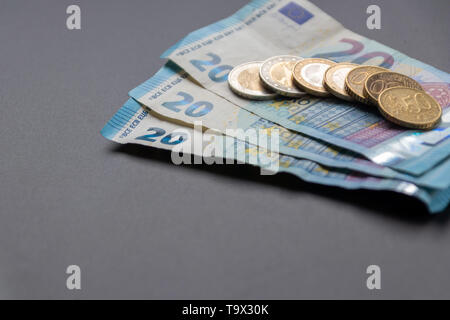20 1 Payout
Annuity Payout or Annual Payment Option: Payment scheme wherein prizes are awarded starting with 1 immediate payment followed by 29 annual payments. These payments are graduated – meaning they increase by 5% each year to account for inflation. New York Take 5 Payout 2021-03-05. Match Prize Amount Winners Where; 5 of 5: $34,602.50: 2: 4 of 5 + Bonus: $368.00: 282: 3 of 5. Per IRM 20.1.1.3, Criteria for Relief From Penalties, penalty relief under Administrative Waivers, including FTA, is to be considered and applied before reasonable cause. If FTA criteria are met, the FTA waiver will be applied before reasonable cause and the taxpayer must be notified that we removed their penalty or penalties based on their prior history of compliance and not based on their reasonable.
The dividend payout ratio is the fraction of net income a firm pays to its stockholders in dividends:
The part of earnings not paid to investors is left for investment to provide for future earnings growth. Investors seeking high current income and limited capital growth prefer companies with a high dividend payout ratio. However, investors seeking capital growth may prefer a lower payout ratio because capital gains are taxed at a lower rate. High growth firms in early life generally have low or zero payout ratios. As they mature, they tend to return more of the earnings back to investors. The dividend payout ratio is calculated as DPS/EPS.
According to Financial Accounting by Walter T. Harrison, the calculation for the payout ratio is as follows:
- Payout Ratio = (Dividends - Preferred Stock Dividends)/Net Income


The dividend yield is given by earnings yield times the dividend payout ratio:
Conversely, the P/E ratio is the Price/Dividend ratio times the DPR.
Impact of buybacks[edit]
Some companies choose stock buybacks as an alternative to dividends; in such cases this ratio becomes less meaningful. One way to adapt it using an augmented payout ratio:[1]
Augmented Payout Ratio = (Dividends + Buybacks)/ Net Income for the same period
Historic data[edit]

The data for S&P 500 is taken from a 2006 Eaton Vance post.[2] The payout rate has gradually declined from 90% of operating earnings in 1940s to about 30% in recent years.
| Decade | Price % Change | Dividend Contribution | Total Return | Dividends as % of Total Return | Average Payout |
|---|---|---|---|---|---|
| 1930s | -41.90% | 56.00% | 14.10% | N/A | 90.10% |
| 1940s | 34.8 | 100.3 | 135.1 | 74.20% | 59.4 |
| 1950s | 256.7 | 180 | 436.7 | 41.2 | 54.6 |
| 1960s | 53.7 | 54.2 | 107.9 | 50.2 | 56 |
| 1970s | 17.2 | 59.1 | 76.3 | 77.5 | 45.5 |
| 1980s | 227.4 | 143.1 | 370.5 | 38.6 | 48.6 |
| 1990s | 315.7 | 95.5 | 411.2 | 23.2 | 47.6 |
| 2000s | -15 | 8.6 | -6.4 | N/A | 32.3 |
| Average | 106.10% | 87.10% | 193.20% | 50.80% | 54.30% |
For smaller, growth companies, the average payout ratio can be as low as 10%.[3]
20 1 Odds Payout
See also[edit]
201 Patricia Ln Fayetteville Ga
References[edit]
- ^http://pages.stern.nyu.edu/~adamodar/ Financial Ratios and Measures
- ^http://www.eatonvance.com/mutual_funds/dividend_story.php The Dividend Story Archived January 27, 2007, at the Wayback Machine
- ^http://www.barra.com/Research/Fundamentals.aspx S&P/Barra Indexes -- Fundamentals Archived December 13, 2007, at the Wayback Machine